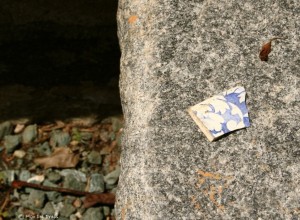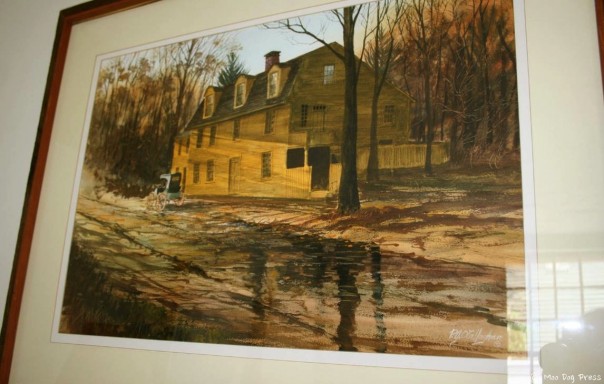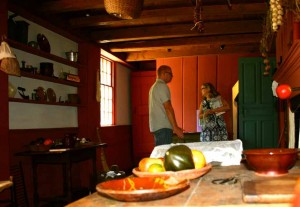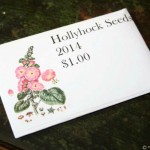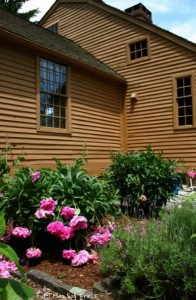Thankful Arnold, Gardens Open House And Grace
Look. Ask. Seek. Knock. What will you find on a visit to a site or garden with layers of history.
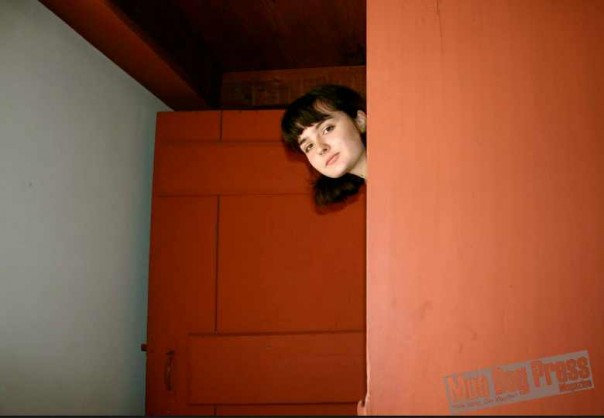
That's Grace Malloy, docent and daughter of Elizabeth Malloy, executive director of the Haddam Historical Society at the Thankful Arnold House.
Yes, Thankful, who was a woman, not a man as many people suppose. Mother of 12, when her husband died unexpectedly, she faced down debt and the prospect of raising their large family, keeping a home when creditors came calling. What she did next and how the house grew and became a legacy for town history is pretty fascinating.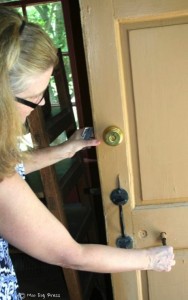
See for yourself, as the house is one of 14 sites for Connecticut Historic Gardens Day, Sunday, June 22, noon to 4 p.m. So get thee to a place you've never been before. It can be right down the road or miles away. Here's the link to find your own slice of natural beauty and human history.
Because old structures and their much-loved gardens hold stories – pages and pages of them. Finding the bones of a landscape in written diaries or the earth itself, then careful cultivation of heirloom plants, shrubs, trees creates a showcase.
Step this way across undulating floors and don't miss the views through the wavy glass windowpanes. Watch your step up the steep narrow stairs to a lookout attic room complete with a trundle bed and chamber pot. Back downstairs, there's a butter churn, a beehive oven, nooks and crannies, oiled floorcloths (ask about how resourceful women repurposed old sails).  The house served as home to a family, for generations of Arnolds, provided rest for travelers with business at the nearby courthouse; later on as a tearoom for guests. The painted “Red House Tearoom” sign is here, preserved along with a printed menu that included club sandwiches for sixty cents, fruit punch for a dime, Southern-style chicken dinners for $2 – by appointment.
The house served as home to a family, for generations of Arnolds, provided rest for travelers with business at the nearby courthouse; later on as a tearoom for guests. The painted “Red House Tearoom” sign is here, preserved along with a printed menu that included club sandwiches for sixty cents, fruit punch for a dime, Southern-style chicken dinners for $2 – by appointment.
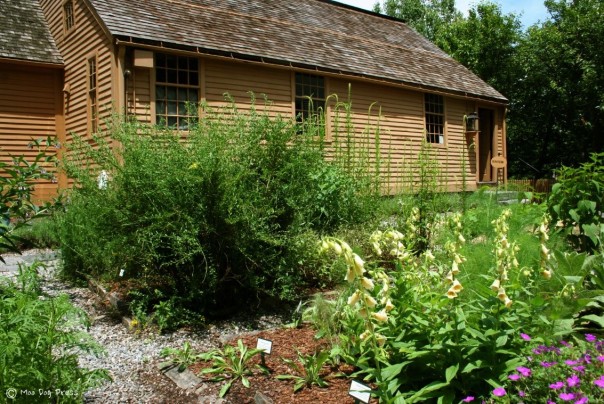
Foxglove, comfrey, lavender, useful for medicinal and culinary purposes. The well-tended gardens at Thankful Arnold House in Haddam, a town on the Connecticut River.
Don't take my word for it. Leave yourself open to unexpected surprises such as a fish-eye mirror or shelves full of broken crockery (ask about the mystery of bushels of shards found in the walls). The chance encounters of people who love history and sharing tales of wells, camping, wide-board floors and what have you are part of life's joy.
Along the way and impossible to predict are such things as rhubarb tea and gingersnaps in a garden. An unforgettable portrait (above) found in a shop. The smile of a young woman when she looked back around a corner while standing on the attic stairs to lead a tour.
These places exist and are open to the public through much dedication and plenty of hard work by people who believe history and growing things matters. Information is shared by docents who show up and share their enthusiasm – and many are volunteers.
Below is an excerpt from the “Widow Arnold's garden tour” from the historical society site.
“Now come out to the garden and I'll show you some of the plants we grew and used. I didn't have edged beds like you see here now, that style came after my time. I had a big garden with plenty of vegetables to feed our family with useful herbs planted among them. The gardens are planted now with herbs used in my time for cooking, medicine, dyeing, fragrance and household uses.
“I grew a lot of root vegetables, like potatoes, turnips, onions and carrots, because they would keep through the winter in our cold cellar. By the end of that long winter you can believe we were ready for some green vegetables and that made this pot herb popular because it was one of the first to begin to grow. We called it All Good, I believe in your time it is called Good King Henry, but who ever heard of a ‘good king'. Sorrel is also an early green. We would usually cook them in soup and stews.”
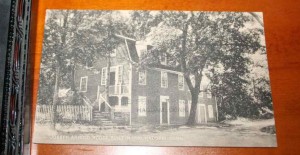
Dedicated in 1973, the garden was given in memory of Wilhelmina Ann Arnold Barnhart, by her father Isaac Arnold, a great-great grandson of Thankful and Joseph Arnold. He also purchased the house to provide the historical society with a permanent home. It was opened to the public on May 29, 1965, dedicated to “the memory of all descendents of Joseph Arnold, an original proprietor of Haddam in 1662.” Upon Mr. Arnold's death in 1973, the title was transferred to the historical society to continue to tell the stories of Joseph and Thankful, their children, and their lives.
The gardens out back thrive, bloom, attract bees and butterflies and humans – plus serve as a living memorial – and what a wonderful way to be remembered.

